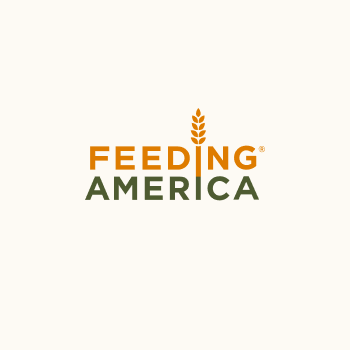Every Day is Earth Day: Our Food Rescue Mission
Did you know that billions of pounds of food are thrown away instead of eaten every year in our country, while at the same time, 1 in 8 Americans face hunger? Food waste and hunger are both persistent problems nationwide. However, these challenges aren’t insurmountable. Every day, nonprofit organizations, businesses and people like you are doing more to prevent food waste.
In the days leading up to Earth Day, Feeding America is shining a light on how together we help rescue food so it nourishes people instead of going to waste. Feeding America is the largest food-rescue organization in our nation, rescuing more than 2.8 billion pounds of excess food per year and helping deliver it to people in need. But we don’t work alone. Feeding America collaborates with compassionate partners to develop creative methods of diverting good food from going to waste to the plates of people in need.
Expanding Successful Partnerships to Rescue More Food
One of the key ways that Feeding America rescues food is through strong partnerships with major food companies. For example, Sam’s Club has generously donated high-value excess food, like meat, from its stores across the country to the Feeding America network for ten years. As part of the company’s commitment to sustainability, Sam’s Club recently expanded its food donations to Feeding America to also include fresh fruits and vegetables. Through this program expansion, significant quantities of fresh produce that is nearing its expiration date but is still perfectly good is now reaching people facing hunger. The program is still in its early stages, but we expect it to provide Feeding America food banks with tens of millions of pounds of fresh produce this year alone. This large-scale opportunity is helping prevent food waste while also providing essential fruits and vegetables to millions of people in need.
Developing New Approaches to Food Rescue
The Feeding America network is also investing in a variety of food rescue partnerships and approaches to continue growing the number of meals we rescue.
For example, last year, Feeding America collaborated with Practice Greenhealth — a nonprofit that helps health care organizations implement earth-friendly practices — to encourage hospitals and health care facilities to donate their excess food to food banks. Together, Feeding America and Practice Greenhealth developed a toolkit that provides hospitals with the resources to develop food waste reduction and management plans. This collaboration demonstrates Feeding America’s increased focus on developing non-traditional partnerships that will help us rescue food from an even wider variety of food-related businesses, including hospitals, hotels, restaurants, convenience stores and online retailers.
Additionally, food banks are also developing new ways of rescuing food in their own communities. Second Harvest Foodbank of Middle Tennessee, a member of the Feeding America network, converts perishable foods into nutritious, long-lasting food products through Project Preserve. As part of this award-winning program, the food bank was able to receive monthly donations of 40,000 local tomatoes and produce a low sodium marinara sauce with a shelf life of 18 months. Second Harvest offers the marinara sauce, along with a variety of other products, to local food pantries and Feeding America food banks so that rescued food can reach people in need across the nation.
On Earth Day and every day, the Feeding America network is finding new solutions to reduce food waste and alleviate hunger. We are grateful to our donors and partners for joining us as we fight hunger and prevent billions of pounds of good food from being thrown away.
Test your food waste knowledge. Take our food waste quiz, Waste It or Taste It, and challenge your friends to do the same.
Liz Baldridge is the director of sustainability and food waste initiatives at Feeding America. As part of her role, Liz grows Feeding America’s collaboration in the food recovery community and provides leadership and support to the Feeding America network of food banks as they implement sustainable business practices.



























